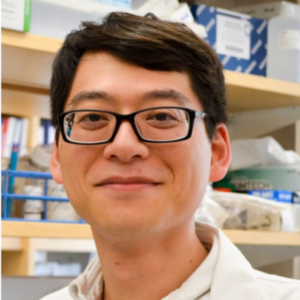Funding Summary
Dr. Tai and his team have used CRISPR genome editing techniques to generate a series of PWS deletion stem cells (small deletion, large deletion and single genes). Here, they will drive the cells to become hypothalamic neurons in a lab dish, then apply advanced technologies to study the cellular properties of these PWS neurons compared to typical hypothalamic neurons. Characterization of these new cellular models for PWS may lead to the identification of new therapeutic targets.
Dr. Theresa Strong, Director of Research Programs, shares details on this project in this short video clip.
Watch the full webinar describing all 7 research projects funded in this grant cycle here.
Lay Abstract
Prader-Willi syndrome (PWS) is caused by a deletion of a small region on chromosome 15 (15q11-q13) that was inherited from the father. The unique genetic nature of PWS has been known for many years, but the precise way it causes the developmental abnormalities is not understood, in part because the deleted region contains many different genes. To investigate this, we capitalized on new techniques for growing human stem cells and manipulating their chromosomes. Using CRISPR genome editing technique, we generated stem cells with PWS deletions including deletions of the full region as well as deletions of the individual genes separately. Moving forward, we will differentiate all these PWS stem cells into neurons from the hypothalamus, a brain region thought to be critically important for obesity and behavioral abnormalities in PWS patients. We will then study the cellular properties of these PWS neurons by comparing them to neurons without the deletions. This will help us determine whether a given single gene is responsible for causing PWS abnormalities. The cell lines generated will establish a powerful resource for the research community. Ultimately, the results will provide a new, genetically precise, human cellular model system for investigators in the field, insights into how PWS deletions translate into abnormal development, and a key foundation for figuring out which genes are responsible for PWS. Hopefully, the generation of this resource and the insights it will provide will lead to new therapeutic targets for PWS, which can then be validated using our cellular system to determine whether they ameliorate PWS-associated cellular abnormalities.
Research Outcomes: Public Summary
The primary clinical features of Prader-Willi syndrome (PWS) include hypotonia, hyperphagia, obesity, hypogonadism, and behavioral abnormalities. PWS symptoms have been linked to hypothalamic dysfunction, but the underlying mechanisms remain unclear. Due to the challenge of assessing human neurodevelopmental signatures, current understanding relies mainly on mouse models. To model PWS and elucidate the disease mechanisms, we have successfully established hypothalamic neuron (HN) organoids from isogenic human induced pluripotent stem cells (hiPSCs). Based on the data of single-cell RNA sequencing (scRNAseq), there are medial mammillary nucleus (MMN) HNs, ARC HNs, premammillary nucleus (PMN) HNs, and prethalamus HNs as major cell classes in these HN organoids. To assess transcriptome signatures associated with PWS, we then performed bulk-RNAseq on the organoids carrying PWS deletion. In addition to the effect on the 15q11.2-13.1 genes, there was also a global effect of the dosage changes on genes outside the PWS region. To explore the potential functional ramifications of the gene expression effects, we performed Gene Ontology (GO) and KEGG pathway enrichment analysis on the DEGs. In GO enrichment analysis, the DEGs were enriched for neuron differentiation, membrane potential, synaptic transmission, neuropeptide signaling. In KEGG pathway analysis, the DEGs showed significant enrichments for bioenergetics, hormone secretion, and protein processing-related terms, including oxidative phosphorylation, glutathione metabolism, protein processing in endoplasmic reticulum, and proteosome. Among these pathways, some pathways have been implicated in PWS pathogenesis, including oxytocin signaling pathway, and GABAergic synapse. These results suggest the HN organoid model can recapitulate PWS relevant signatures. Our work has laid the groundwork for understanding the disease mechanism.
Funded Year:
2020
Awarded to:
Derek Tai, Ph.D
Amount:
$54,000
Institution:
Massachusetts General Hospital
Researcher:

Derek Tai, Ph.D




